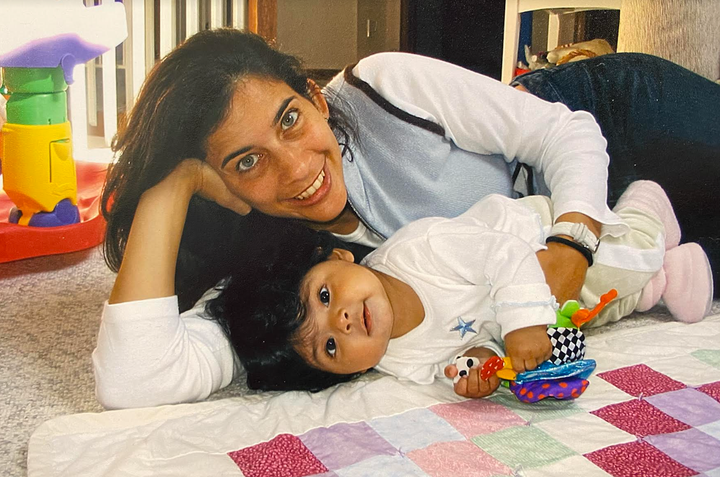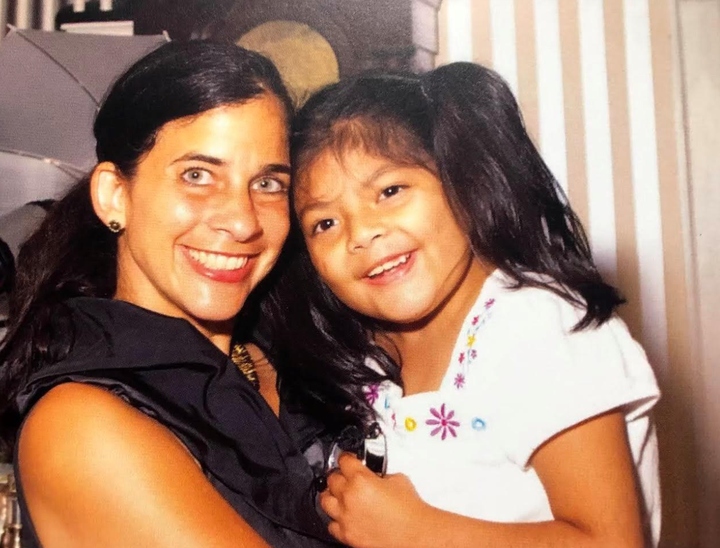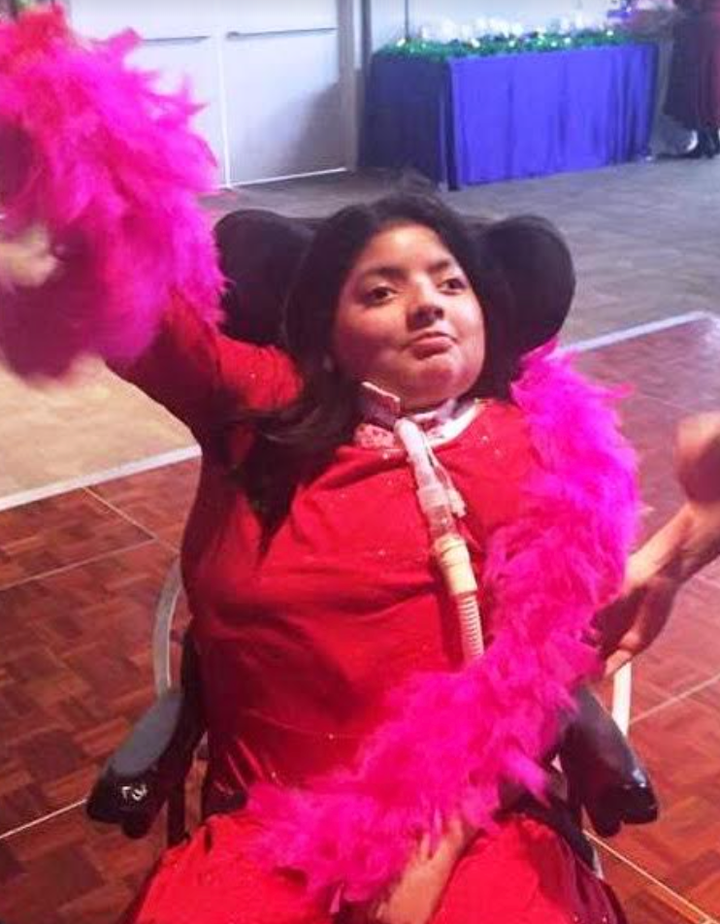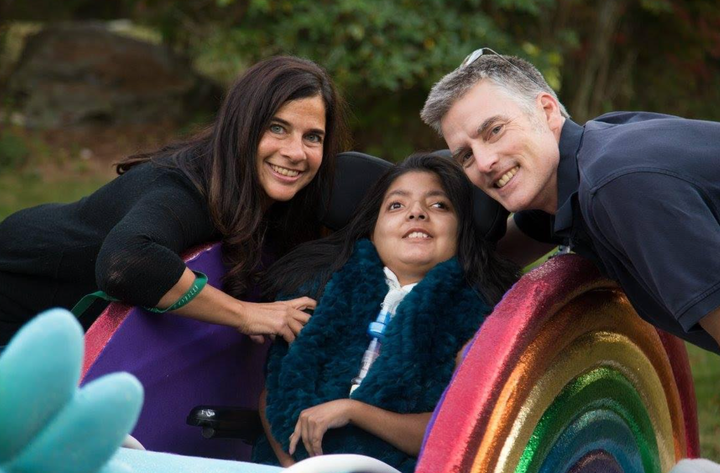
When my husband and I adopted our daughter Dalia from Guatemala, nearly 18 years ago when she was six months old, there was so much I didn’t know.
I didn’t know how to get her to sleep when I was desperate for a nap. I couldn’t tell if her crying meant she was hungry or gassy or teething. I wasn’t sure how she’d respond to our dog, who was three times her size, or why the first sounds she made sounded more like grunting than cooing.
I didn’t know it would take me less than a minute to fall in love with her when she was placed in my arms or that I’d love her more with each passing day when I thought I already loved her as much as humanly possible.
And I didn’t know she had MERRF syndrome, a rare degenerative mitochondrial disease.
Dalia was diagnosed with MERRF when she was five years old. I didn’t know, and wish I never had to learn, what MERRF, or even mitochondria, were.
What I did learn and what I now know all too well is that MERRF, short for myoclonic epilepsy with ragged red fibers, is an extremely rare disease affecting fewer than 1 in 100,000 people.
The symptoms vary widely from person to person and can range from seizures and impaired coordination to eye abnormalities, dementia and cardiac defects, and it can even cause death.
I learned that there’s no cure and that a degenerative disease is a particularly cruel decree for a child. Over time, I learned that most doctors we’d encounter had never heard of MERRF syndrome.
At first, Dalia developed typically. At least that’s what the doctors and early intervention experts said when I raised my concerns that her speech and balance seemed off.
But then at four she was diagnosed with a mild-to-moderate hearing loss. That led to genetic testing and ultimately to the unimaginable diagnosis of a disease that would slowly take away her ability to walk, talk, eat and breathe on her own.

There was no way to know how quickly the disease would progress or where in her little body it would strike next. At times it felt as if she was learning and losing simultaneously.
She went from waddling to running and jumping, back to a stroller, a walker and then a wheelchair. She learned to write her name and surprised me with sweet notes in my work bag. In time I held my hand over hers to steady her shaky grip on the pencil. Her words became scribbles we hung on the fridge.
When she was nine, Dalia got pneumonia and had to be intubated. We stayed in the hospital’s intensive care unit for three months. When we returned home, she had a tracheostomy tube in her neck that attached to a ventilator. She never walked or talked again. She needed round-the-clock care ― a trained nurse or my husband or me to have our eyes on her at all times.
For the next eight years, we lived on the precipice. We learned what the numbers on the ventilator meant, when to suction a trach tube, how to use a food pump, a cough assist machine and a ceiling lift to move our daughter from her bed to her wheelchair and back again.
We wished we could slow time to have more days, more minutes, that were better than the ones that would come next.
We pushed the machines and the alarms and the medical equipment to our peripheral vision and focused on bringing as much happiness and laughter into Dalia’s life as we could. We carefully moved the tubes aside so we could crawl into bed and read to her. We had water fights with the saline syringes that were meant to lubricate her trach. We tied a kite to the arm of her wheelchair and watched it soar. And sometimes the joy was louder than the sorrow.

I hated every single thing about this insidious disease that was taking my daughter away from me. I would have given anything ― my home, my limbs, my life ― to banish it. But its tentacles were too strong.
Now, almost exactly one year after Dalia died, I’m more committed than ever to spreading the word about mitochondrial disease in particular and rare diseases in general. I speak and I write and I serve on the board of MitoAction, a support and advocacy organisation.
For all those years I was focused almost exclusively on my tree. Now I see the forest. There are about 10,000 known rare diseases, affecting 30 million people in the US alone.
My friends whose kids have rare diseases ask me, “Why are you still here with us?” They don’t understand why I choose to remain in this horrible club that I don’t have to be in anymore ― why I’d let the very thing that shattered my life take up any more space.
I’d love to say I speak out solely to help the next family who’s about to get the call that will turn their life into a before and after. But the truth is simpler than that: I am not the person I was before I knew about MERRF syndrome. The impact of rare disease is now woven into my DNA and inextricably links my daughter and me.
When I speak with and work alongside others in the rare disease space, I feel close to Dalia. I get to share her story and hope to make a fraction of the impact she made on everyone whose life she touched, because what I learned from Dalia was so much bigger than the minutiae of how to care for a baby or even how to care for somebody with a debilitating illness.

Dalia showed me that you don’t need to speak to make the loudest impression in the room. She exuded love, even when she had so much to be angry about, and people reflected that love right back to her.
She showed me that you can have awesome dance moves even when all you can move is your shoulders and that it’s OK to be happy, even when you’re decimated. She taught me that sometimes the goal isn’t to find the light at the end of the tunnel but instead to make the tunnel itself as beautiful as possible.
So I’m glad I didn’t know Dalia had MERRF syndrome when I adopted her. If I had found out about a little girl with a horrible disease in another country, I don’t think I would have been the one to raise my hand. But by the time Dalia was diagnosed, she was mine and I was hers. She couldn’t have been any more my daughter if she had my healthy genes coursing through her body.
It’s heartbreaking to be alongside other families in the rare disease world and know intimately what their challenges feel like. But it would be impossible to walk away and pretend I didn’t know what I do now. So today I honour Rare Disease Day because that’s what the calendar tells me to do. And the rest of the year I do what I can to spread the word because that’s what my heart tells me to do.
Jessica Fein writes about the mingling of joy and sorrow, raising a child with a rare disease and staying rooted when life tries to blow you down. She hosts the “I Don’t Know How You Do It” podcast. Her memoir, “BreathTaking: Rare Girl in a World of Love and Loss,” will be published in 2024. Connect with her on Instagram @feinjessica for real talk about love and loss and glowing book recommendations.
Do you have a compelling personal story you’d like to see published on HuffPost? Find out what we’re looking for here and send us a pitch.